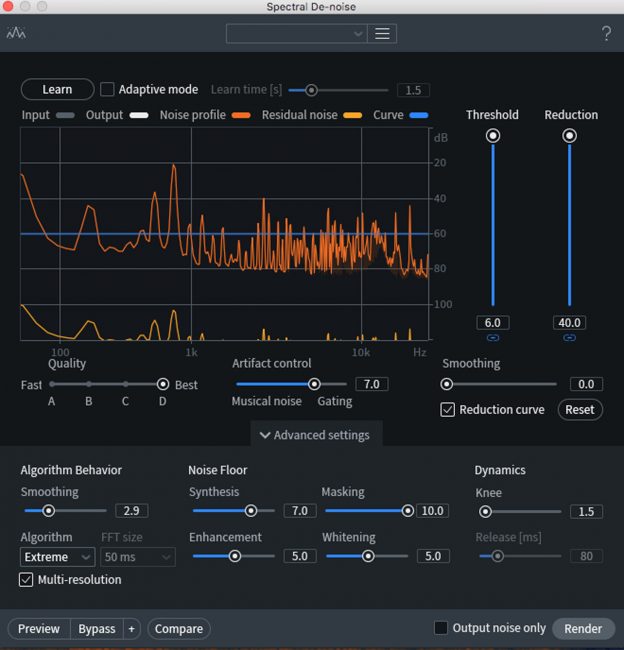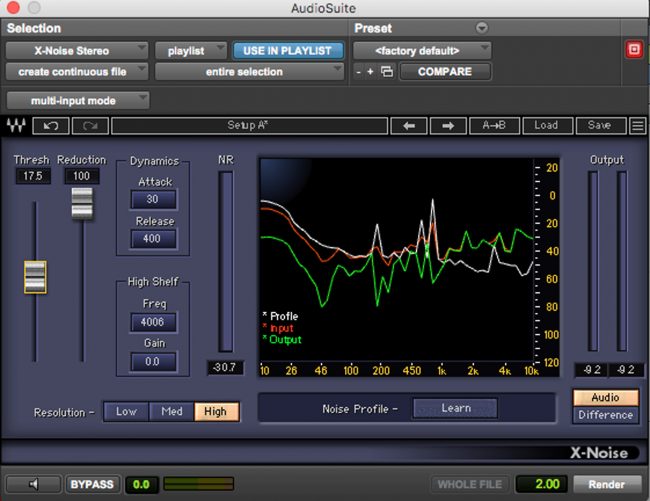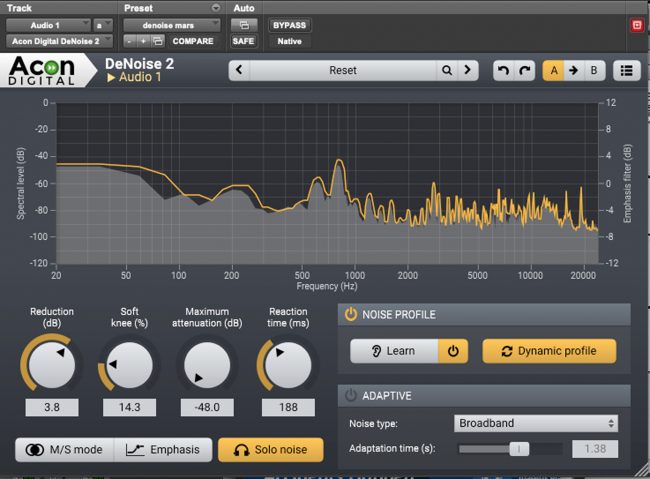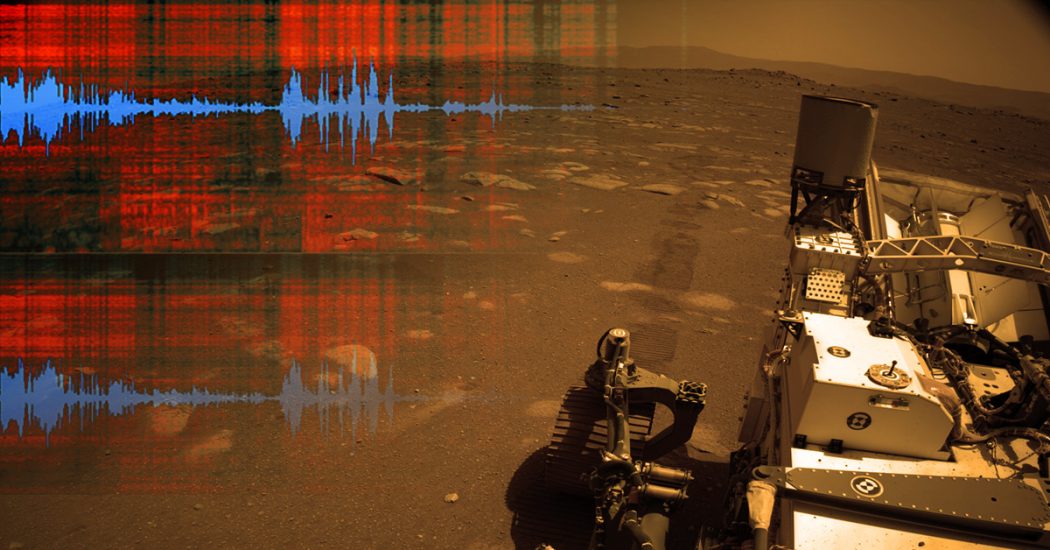
Dear NASA,
My name is Lynn Fuston (rhymes with “Houston”), and I wanted to tell you how impressed I am that you put a microphone on Mars. Taking that DPA microphone on the Perseverance rover is astounding, allowing us to actually hear what Mars sounds like. What I’ve heard so far is fascinating, and I look forward to hearing more Martian sounds in the coming months.
However, as an audio professional, I’d love to offer some help when it comes to cleaning up the audio from Mars because it can sound better than what I’ve heard so far. To that end, I went into the studio and recorded some samples I’d like for you to consider. In the interest of doing my part for interplanetary audio exploration, I’d like to offer these suggestions for plug-ins for cleaning up the sounds from Mars. See which one you like best. Sweetwater can hook you up.
Your devoted fan and committed space enthusiast,
Lynn Fuston
NASA has been sharing the audio that it’s getting back from Mars. Graciously, they are offering the original audio files (raw, as 16-bit/48kHz WAV files) along with processed (filtered) versions of the same. They are offering these on Soundcloud, and I’m so thankful they are. It’s truly amazing to get the chance to have “ears on the ground” on Mars. But the audio is not great. I’m not being critical, just professionally honest. More importantly, I understand why. Their first priority was landing on Mars, not getting great audio. I get that.
According to NASA’s own SoundCloud page:
“The noise generated by the interaction of the rover’s wheels and suspension with the surface can be heard, along with a high-pitched scratching noise. Perseverance’s engineering team continues to evaluate the source of the scratching noise, which may either be electromagnetic interference from one of the rover’s electronics boxes or interactions between the rover mobility system and the Martian surface. The entry, descent, and landing microphone was not intended for surface operations and had limited testing in this configuration before launch.“
That explanation is totally understandable. NASA didn’t have a chance to test it in situ before they started. (And who could? It’s Mars!) But dealing with unknowns is a situation that audio engineers are all too familiar with (well, not the Mars part, but any sound engineer who’s done festival sound knows about mixing without a test run). Fortunately, audio engineers have worked for years to come up with tools to deal with compromised audio. And that’s why I’m writing this article — to offer assistance in coming up with better Martian audio.
To review, here’s a portion of what NASA started with — directly from Mars, directly from NASA’s SoundCloud page.
And this is NASA’s “filtered” audio that was extracted from it.
Honestly, the filtered version doesn’t sound that great. No definition, no top end, and it sounds sort of underwater. Which is why I thought I’d offer to help. Because I’ve been doing this for years, and I know how much better it can be.
I’ve spent 40 years as a recording engineer and have dealt with my fair share of compromised audio. (I’ve got stories from sessions around this globe, but no track record on Mars!) So, I drafted Sweetwater Studios’ staff engineer Bobby Dellarocco to join me in the studio with the raw audio from Mars to see if we could come up with better results. We auditioned several forensic-style de-noising plug-ins to see which could extract the best results from NASA’s original audio files. Here are sound files for you (and NASA) to hear and a description of how we achieved them. Take a listen and see which one you think sounds best. Our sample is the section between 3:36 and 3:47 from the original 16-minute file.
iZotope RX 8
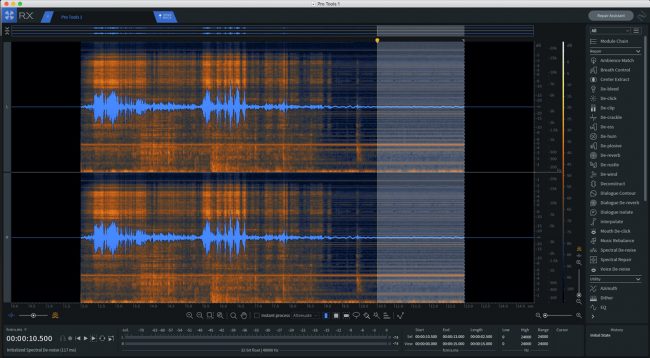
iZotope RX 8 is an amazing tool for cleaning up audio, offering options to remove clipping, clicks, reverb, and more (see the menu bar below). For the Mars audio, Spectral De-noise was our choice because it can listen to and intelligently “learn” from the audio and then remove just the unwanted noise based on parameters we set. We selected a clip with machine sounds and nuisance sounds. Listen for three things in the following clips:
- The clarity of the resulting audio
- The problematic noises it removed
- The silence at the end of the clip
First, Bobby loaded the raw audio clip into Pro Tools and chose the AudioSuite version of RX 8. Then we highlighted a section of the audio file that contained just the noise we wanted to eliminate; in this case, the loudest noise was the hum of the rover centered around 800Hz. Then we told RX to “Learn” the audio, making sure we selected “Best” on the Quality slider. We rendered (processed) the audio and listened to the result. We also printed the difference signal (which is only what was removed) so we could hear what RX was taking out. We’ve included that below, too. It was very interesting. The resulting RX-cleaned-up audio file was very revealing without all the distracting noises.
Here are the settings (below) that we arrived at after clicking the Learn button (upper-left corner).
Waves X-Noise
Next, we tried the Waves X-Noise plug-in. Using the AudioSuite version again, we set the Resolution to High, highlighted a section of the background noise, and then chose Noise Profile — Learn, and clicked the preview button (speaker icon) so it could learn from the existing audio. Then we previewed the result. After adjusting the Threshold (to 17.5) and Reduction (to 100) faders, we were happy with the result, which you can hear below. We’ve included the “Difference” file below so you can hear what sound was subtracted from the original.
Acon Digital DeNoise 2
DeNoise 2 is part of the Acon Digital Acoustica Premium Edition Collection. Similar to the previous plug-ins, we launched DeNoise and highlighted the noise then turned on the Noise Profile Learn function and played the noise. After adjusting the Reduction setting (to 3.8dB) and Reaction Time (to 188ms), we were very impressed with the noise reduction. We printed the DeNoised file and also clicked “Solo noise,” which allowed us to print the “Difference” file, included below.
Accusonus ERA 5 Noise Remover Pro
Noise Remover Pro is part of the ERA 5 Bundle Pro Audio Repair & Enhancement Bundle; and it has presets, so we auditioned several before deciding on Extreme Denoise. We adjusted the Master Processing amount until we were happy with the results. Here’s what the result sounded like along with the “Difference” file so you can hear what it removed.
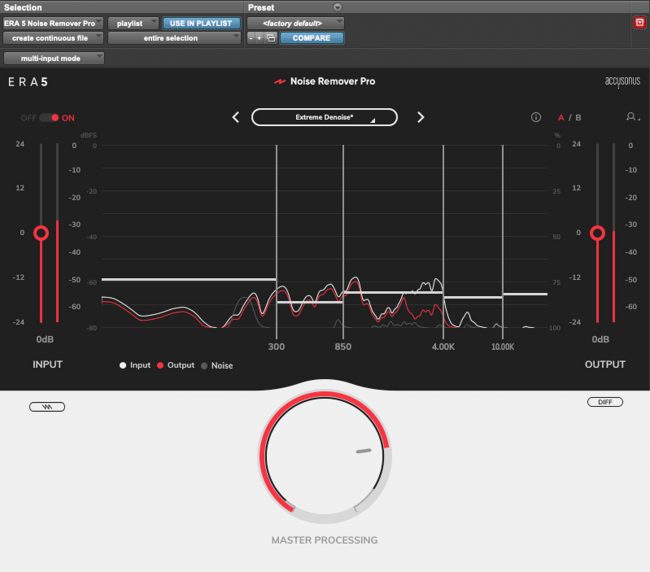
Conclusion
That was pretty enlightening, right? And the best part is that these plug-ins not only work well for sounds from Mars but also offer other options for removing distortion, hum, background noise, reverb, wind, and lots more. Even if you don’t have any interplanetary audio that you need to fix, just imagine what you can do with those “less than ideal” source files that your clients bring in or maybe with the audio from that pickup gig that you rocked but the board tape was not recorded well. Any of these plug-ins will make your life easier and your mixes sound better. The power of the restoration tools we have available these days is out of this world!!



